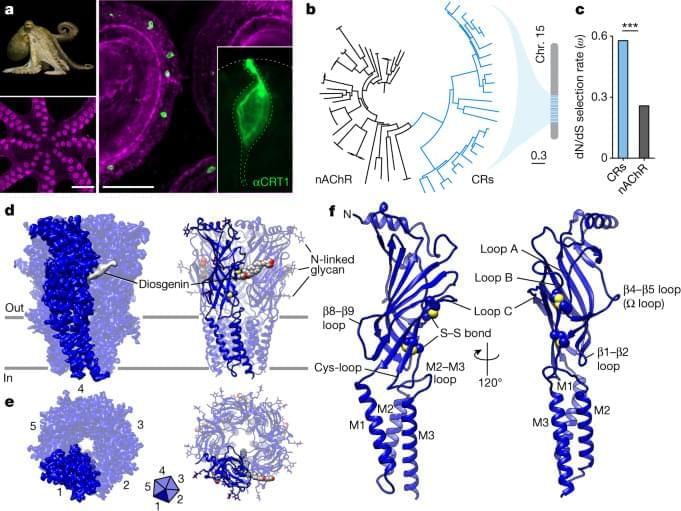Cryo-electron microscopy analyses reveal adaptations that facilitate the octopus chemotactile receptor’s evolutionary transition from an ancestral role in neurotransmission to detecting greasy environmental agonists for ‘taste by touch’ sensory behaviour.
